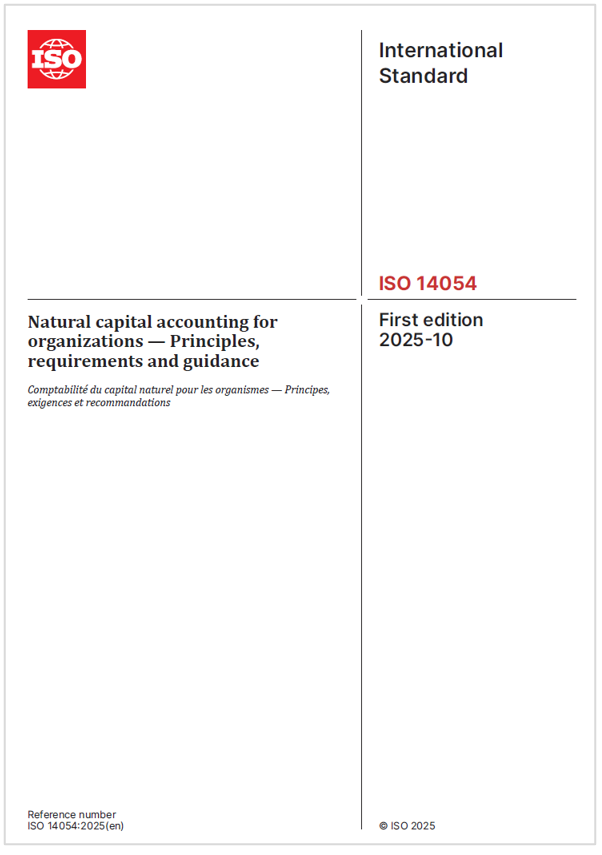
ISO 14054:2025
Guidance preparation of natural capital accounts for organizations
ID 24900 | 11.11.2025 / Preview attached
ISO 14054:2025
Natural capital accounting for organizations - Principles, requirements and guidance
Valid from 24.10.2025
________
This document provides terminology, principles, requirements and guidance for the preparation of natural capital accounts for organizations.
Natural capital accounts quantify the impacts from the organization’s activities on natural capital, or the dependencies of the organization on natural capital, or both.
The scope of natural capital accounts can be expanded to cover activities in the organization’s value chain.
There are two types of natural capital accounts, each with supporting schedules:
a) the natural capital income statement;
b) the natural capital balance sheet.
This document is applicable to all types of organizations (e.g. public, private (both listed and unlisted) or non-governmental organizations) across all sectors, and of any size (such as small to medium-sized enterprises (SMEs) and larger businesses) and to one or more sites at which they operate.
This document does not apply to national, sub-national or sector-wide natural capital accounts.
________
3.1 Terms related to natural capital
3.1.1 natural capital
stock of renewable and non-renewable natural resources (e.g. plants, animals, air, water, soils, minerals) of a given quality existing at a point in time that separately or in combination yield a flow of benefits to people
Note 1 to entry: Natural capital includes both living and non-living aspects. It includes biotopes, mountains, fields, forests, meadows, unimproved land, minerals, oceans, glaciers, ice sheets, freshwater, microorganisms, wild fauna and flora, electromagnetic spectrum, and geospatial orbit.
Note 2 to entry: Natural capital underpins all the other forms of capital (social, human, intellectual, financial and manufactured). Natural capital, often in combination with other forms of capital, provides natural capital benefits (3.1.4) over time.
________
...
Preview attached
Info / download


|

